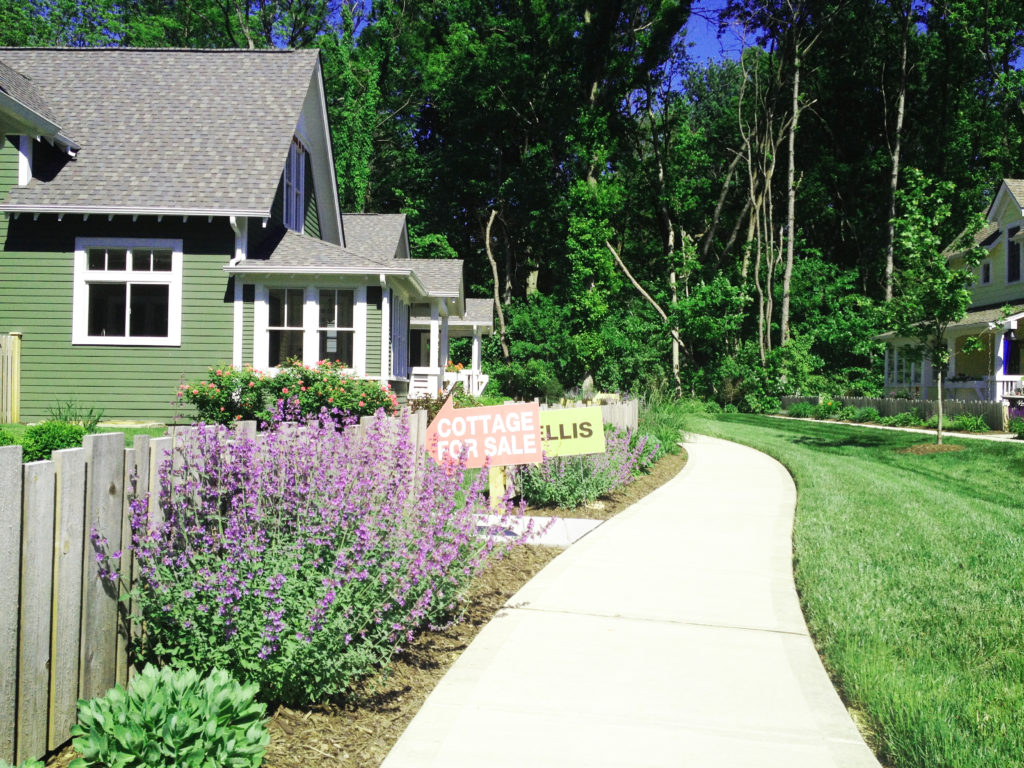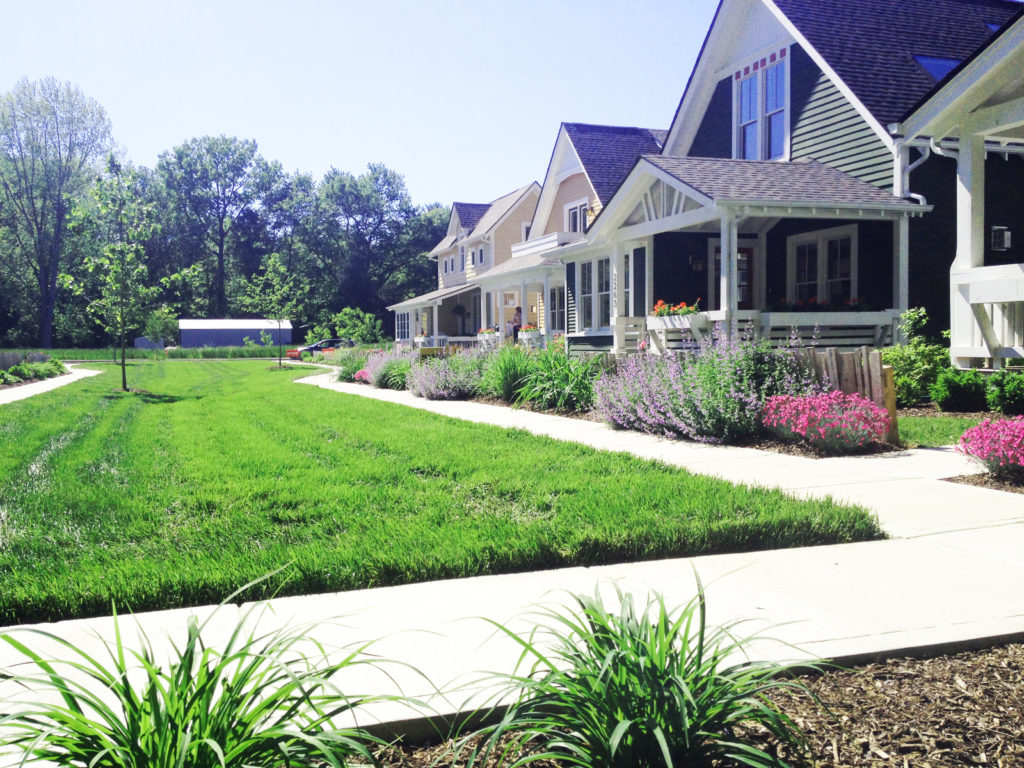Inglenook, the first project in the city of Carmel, Ind. to use a Low Impact Development (LID) integrated stormwater management system, exceeded the city’s standards and requirements and now stands as a model for similar systems in the city.
The Inglenook Project
The LID system included micro-detention and infiltration to address stormwater runoff management. On-site stormwater features consist of permeable pavers, bioretention areas and underground gravel storage reservoirs, which pre-treat stormwater runoff before it dissipates. The Inglenook design greatly reduces or eliminates surface discharge from the site for all storm events less than a 100-year event. The integrated design required a thorough understanding of the existing soils and flood conditions on the site, as well as recognizing drainage contributions from off-site developments.

The result is a stormwater runoff management system that goes above city of Carmel standards and requirements for stormwater quantity and quality. The project included:
- A low-impact “sustainable” site design that has an underground stormwater management system and bioretention.
- A green “common area” that makes up 33 percent of the site.
- Permeable pavers within street parking and common drive areas.
- No retention ponds; therefore no home owners association liability.
- Zero downstream stormwater discharge for all storms up to a 100-year event.
Because of the unique integrated stormwater management infiltration system approach within the initial development phase as well as the modeling assumptions involved, a system of monitoring was set up.
Beyond Initial Goals
The Inglenook residential neighborhood of Carmel project not only conserves natural resources; it also promotes the health and well-being of its residents and the public and excels in achievement of these goals.

The innovative LID techniques were integrated into the overall design; therefore, the project had the following results:
- The site plan preserved a 100-foot wooded buffer at the main entrance to the property along 99th Street, which is used to filter, stage and route stormwater entering the Inglenook site from the developed area to the north.
- The project integrated the stormwater management system, which incorporates groundwater recharge through infiltration and provides improved water quality for downstream/off-site as well as on-site runoff.
- Using smart, space-saving designs, the smaller home footprints supported a reduction in urban sprawl.
- The phasing of the development minimized impact to natural resources and limited the use of construction materials to those necessary to meet immediate demand.
- The native landscape design uses a planting palette suited for the climate that does not require irrigation. Elimination of the irrigation system means less impact on precious water resources and reduced use of construction materials.
The final design improves existing drainage within the entire watershed, including zero downstream stormwater discharge from the developed site up to a 100-year storm event, which relieves the burden on existing stormwater management systems. More stormwater volume storage was provided within the integrated stormwater management system than was available in the pre-development condition. As a result, the 100-year discharge was reduced from a pre-development rate of 32.1 cubic feet per second to a projected post construction rate of 0.98 cubic feet per second.

Project Challenges
One challenge of the Inglenook project was that a variance had to be obtained from the city of Carmel for its Stormwater Standard 302.06(1). The variance was needed to allow the integrated stormwater management infiltration approach. Another challenge was that developers and project managers needed to work closely with city staff to maintain the desired character of the neighborhood while meeting the conditions of the Public Utility District.

Maintenance
Although the challenges have been met and the project put into place, the relationship with the city continues. The property owner has entered into a post-construction operation and maintenance agreement with the city of Carmel. The agreement is to operate, inspect and maintain all stormwater facilities outlined in the post-construction operation and maintenance manual prepared by Williams Creek Consulting, including submission of annual inspection reports to the city. In addition, the owner will observe and monitor actual field conditions during and after construction to validate the design assumptions made in future phases of the project.

